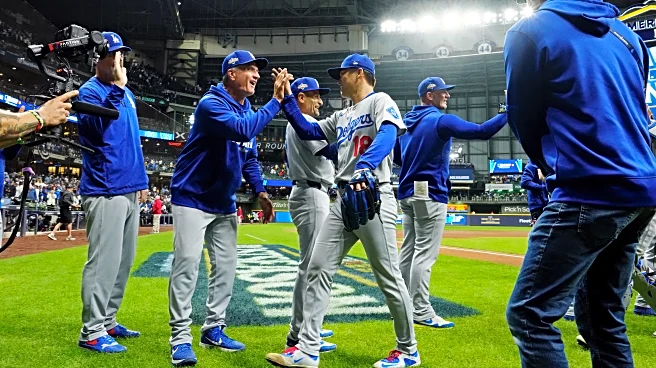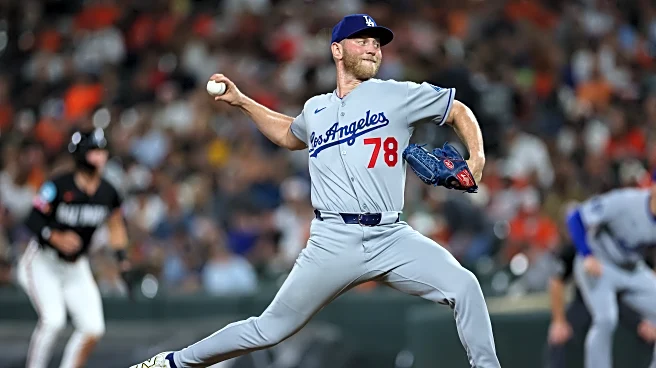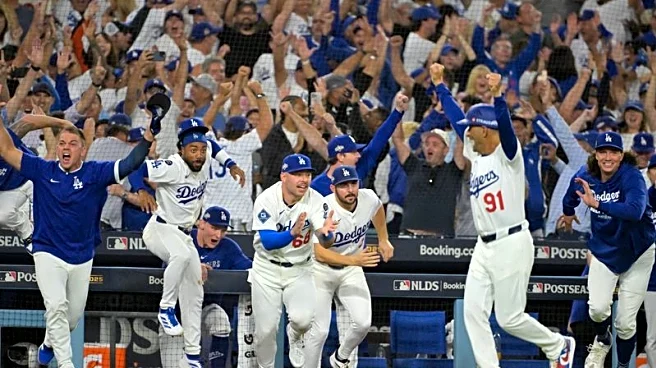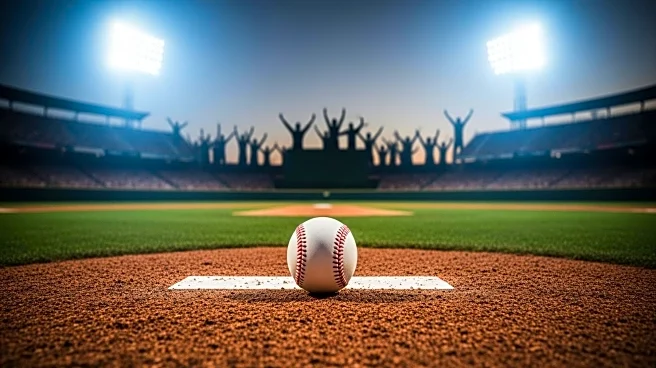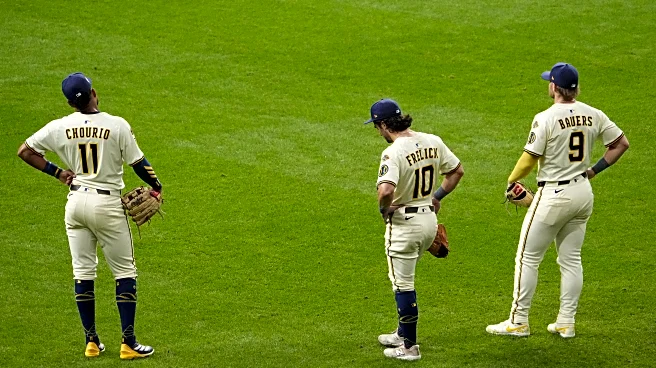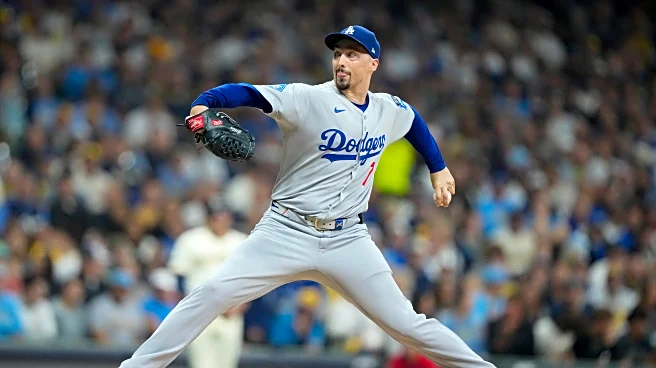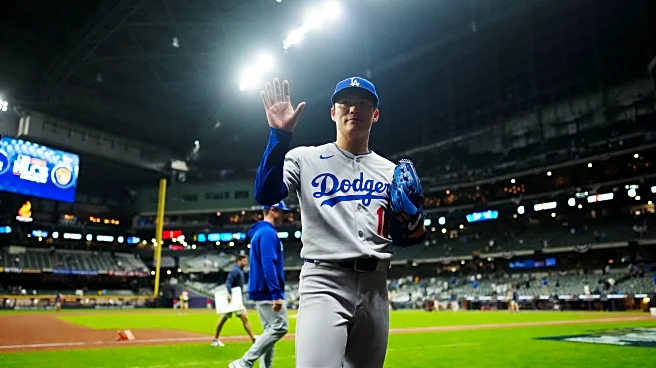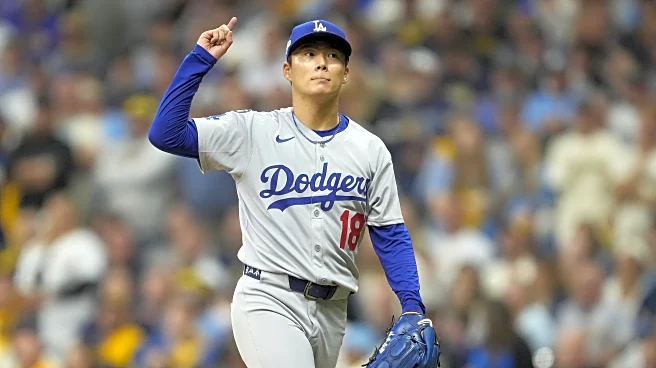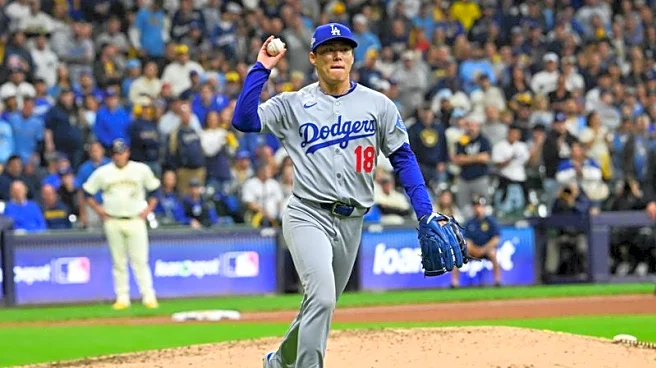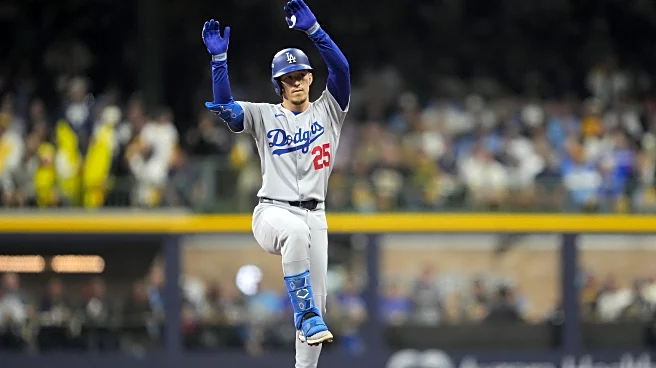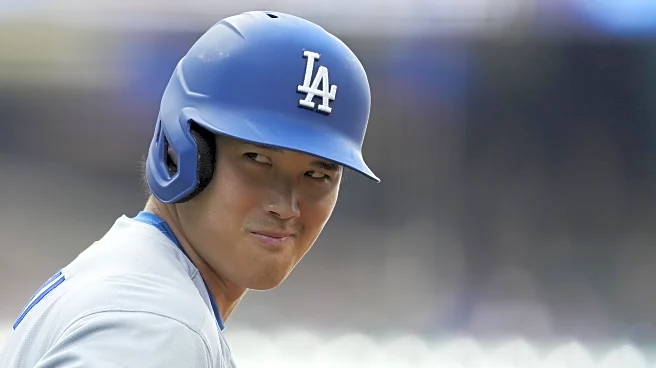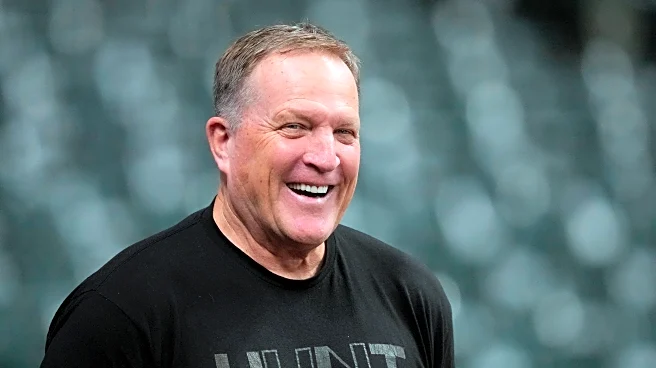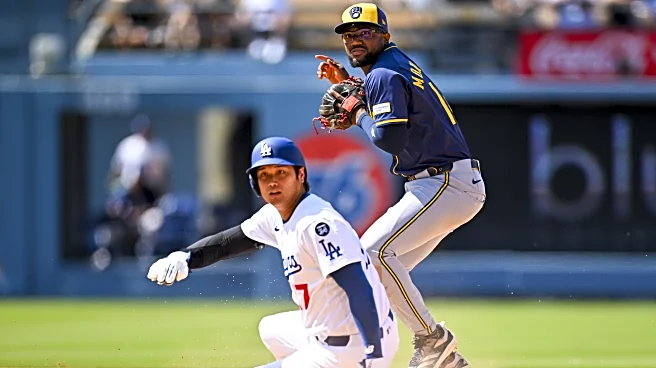Seeing both number one seeds of this tournament look so overmatched over the same 72-hour window is a bit shocking to see for the uninitiated. The Dodgers and Seattle Mariners have pulled off something in postseason play not seen in 55 years, per Sarah Langs:
The 1970 Cincinnati Reds stormed into Three Rivers Stadium and took the first two games
against the Pittsburgh Pirates. The 1970 Baltimore Orioles brought the flock and fury into Metropolitan Stadium by scoring 21 runs and took the first two games against the Minnesota Twins.
Both League Championship Series ended in three-game sweeps. The Orioles swiftly dispatched the Reds in the World Series via a gentleman’s sweep in five games. If history repeats itself, one hopes for a slightly different outcome.
Let us return to something that has become quite germane over the past three days:
The Brewers’ approach of low strikeout, contact-oriented offense, solid defense, just enough relief and starting pitching would likely be more effective against the Dodgers in a short series.
Even with the league’s best record, the Brewers made only miminal additions to their roster at the trade deadline. Had the Brewers actually expended modest effort to bolster their roster at the deadline, I would be far more concerned for this series…
…Would the Brewers be better if they spent $17 million for Michael Conforto? Actually, no. No one would have been improved for making that the deal the Dodgers made. The Brewers have been an organization that has focused on saving pennies at the expense of dollars.
Yes, they play in MLB’s smallest market — until Las Vegas comes online. Yes, the Brewers receive revenue sharing money. If anything, teams like the Dodgers are subsidizing the frugality of teams like the Brewers, Pirates, and Marlins.
Basically, the Brewers had to be perfect to be the Dodgers. The Brewers were very nearly perfect in Game 1 and had the mother of all lucky breaks, and still could not prevail. The Dodgers sauntered into Cream City, drank the Brewers’ milkshake, said thank you very much, and now sashay back to Los Angeles with a two-game lead.
Now, am I saying that both LCS series are over? Absolutely not.
The worst thing to happen so far in Milwaukee? Ghosts. Why is it always ghosts?
The Dodgers’ rotation is healthy and dealing at a historic rate. And yet, the offense is still only in second gear. Mookie Betts, Shohei Ohtani, Andy Pages: where art thou? If the offense starts clicking like it was in the Wild Card Round…oh boy, start the party, Los Angeles.
The Right Profession
As things currently stand, if the Brewers had Brandon Woodruff available and this series were best-of-five games, the Brewers would have been in a much stronger position to prevail against the Dodgers.
The Brewers’ problem so far with the paper-cut nature of their offense, of taking the extra base and stealing bases, is that pesky, eternal problem: how do you steal first base?
Moreover, the Brewers’ arms, such as they are, are being taxed at an unsustainable rate. The Brewers’ bats have gone silent. For all of Pat Murphy’s skill, it seems unlikely he can folksy his way out of this pickle. In his defense, it is possible to do nothing wrong, and still lose; it is not failure, it is life.
If the Brewers continue to try to outslug the Dodgers rather than play their way, which led to the most successful record in MLB in 2025, the NLCS will likely not return to Milwaukee. Still, pundits need things to talk about, apart from tired narratives that will likely only grow louder as the month continues. The award for most panicky idea goes to Erik Kratz:
If the Brewers continue to try to play the Dodgers’ way, it will likely end in disaster for them. The Dodgers will take a slugfest in this circumstance eight days a week, including twice on Sundays. Moreover, the Brewers showed more pop in the LDS early because the Chicago Cubs, frankly, were not all that impressive.
I would feel more unease if the venue were shifting back to Wrigley Field, considering how rowdy that ballpark can get. But if that fact were the case, we would not have the neat little statistic described at the beginning of this essay.
If it is not painfully clear by now, the Brewers are built more for a regular-season campaign. As previous failed campaigns in 2021, 2022, and 2023 demonstrated, if you do not have the right combination of personnel and health for the postseason tournament, barring a blunder or factors outside one’s control, the run will likely be quick.
The postseason is an entirely different animal, as slugging and power arms traditionally carry the day.
That analysis is not say that an approach like the Brewers cannot work (as an aside, the Blue Jays look like the Padres did in 2022 after dispatching the Dodgers — mission accomplished, which is the wrong mission!), but the margins for error are much narrower given the make up the teams involved. But at the end of the day, pitching trumps hitting.
Still, for as much whining about the preceived need for a salary cap in baseball from those that seemingly are addicted to boot leather, I would like to take a moment to point out how much payroll is not active during this series. This list is not exhaustive, but the point should be clear.
- Michael Conforto, $17 million
- Kirby Yates, $13 million
- Tanner Scott, $11 million
- Chris Taylor (no longer with the organization), ~$13 million
Roughly $54 million using back-of-the-envelope math in four contracts, which is almost half the payroll of the Brewers.
The Dodgers have the financial resources and acumen to be an attractive destination for the best players in baseball and they develop talent while perpetually picking at the bottom of the draft. This development applies to the fringes of the waiver wire.
It is not a perfect process, as for every Bobby Miller, there is a Jack Dreyer. For every Michael Busch, there is a James Outman. For every Evan Phillips, there is a Yohan Ramirez.
Infamously, the Dodgers only tinkered on the edges at the trade deadline, building for the future and not obtaining arms like Jhoan Duran and bats like Stephan Kwan in favor of Alex Call, prospects, and twenty minutes of Brock Stewart.
What’s the Brewers excuse? They have prospects, don’t they? Deep playoff runs do not come along every day, and it would be quite ironic if the Brewers’ frugality finally had negative dividends to end the year.
“Losing isn’t an option.”
The Dodgers were banged up in ‘21 and ‘23. With all respect to the parties involved, remember when the Dodgers were expecting critical playoff innings from Lance Lynn (’23), Tony Gonsolin (‘22), or the reliance of bullpen games (’21 and ‘24)? The 2024 playbook of having a super bullpen and three-ish starters only works when you have enough offense to paper over the coverage needed.
The Padres had a super bullpen this year too — they just never had many leads to protect in October. Oh darn. As an aside, how did that managerial job get so toxic, so quickly?!? Death threats from people betting on baseball. Expect more offseason coverage of this likely worsening story.
Going from white-knuckling a playoff run or literally punting games to having the Dodgers’ social media team finally break out the hype is quite the welcome development.
The Dodgers’ starters have been on a historic tear over the last month.
Don’t believe me? Over the past month, the staff is putting up numbers that likely Cy Young winners Tarik Squbal and Paul Skenes look middling.
Accordingly, the Dodgers’ rotation edge has been played to near perfection so far in this series. At this rate, if Tyler Glasnow only goes six shutout innings in Game 3, his effort will somehow and unfairly be pedestrian. If Ohtani continues to pitch this well, even a simply average bat will propel the team to glory.
For as stunning as Yoshinobu Yamamoto was in Game 2 of the NLCS, I argue that he was even more impressive in Baltimore on September 6th. Granted, in that start, he was only able to get 26 outs (the bum), as Jackson Holliday rained on the Dodgers’ parade.
In Game 2: no Jackson Holliday equals no problem here.
I have long argued that Yamamoto has one of the best pitching resumes in history, and that his 2024 inagural campaign was only scratching the surface of potential in the United States. Moreover, his performance in Game 2 reminds me of his final game in NPB, where he threw a 138 pitch, 14-strikeout complete game with the Orix Buffaloes with their season on the line.
Other writers could and should gush about how solid Yamamoto and Roki Sasaki have been in this postseason run.
But it is worth remembering that these players are not rookies; they are professionals who have been tested in Japan. Considering the run of success that the Dodgers are currently on, it would be an over simplification to assume incoming players to MLB like Munetaka Murakami (think Max Muncy but younger, Japanese, and a worse strikeout rate over the past couple of years) are just “rookies.”
